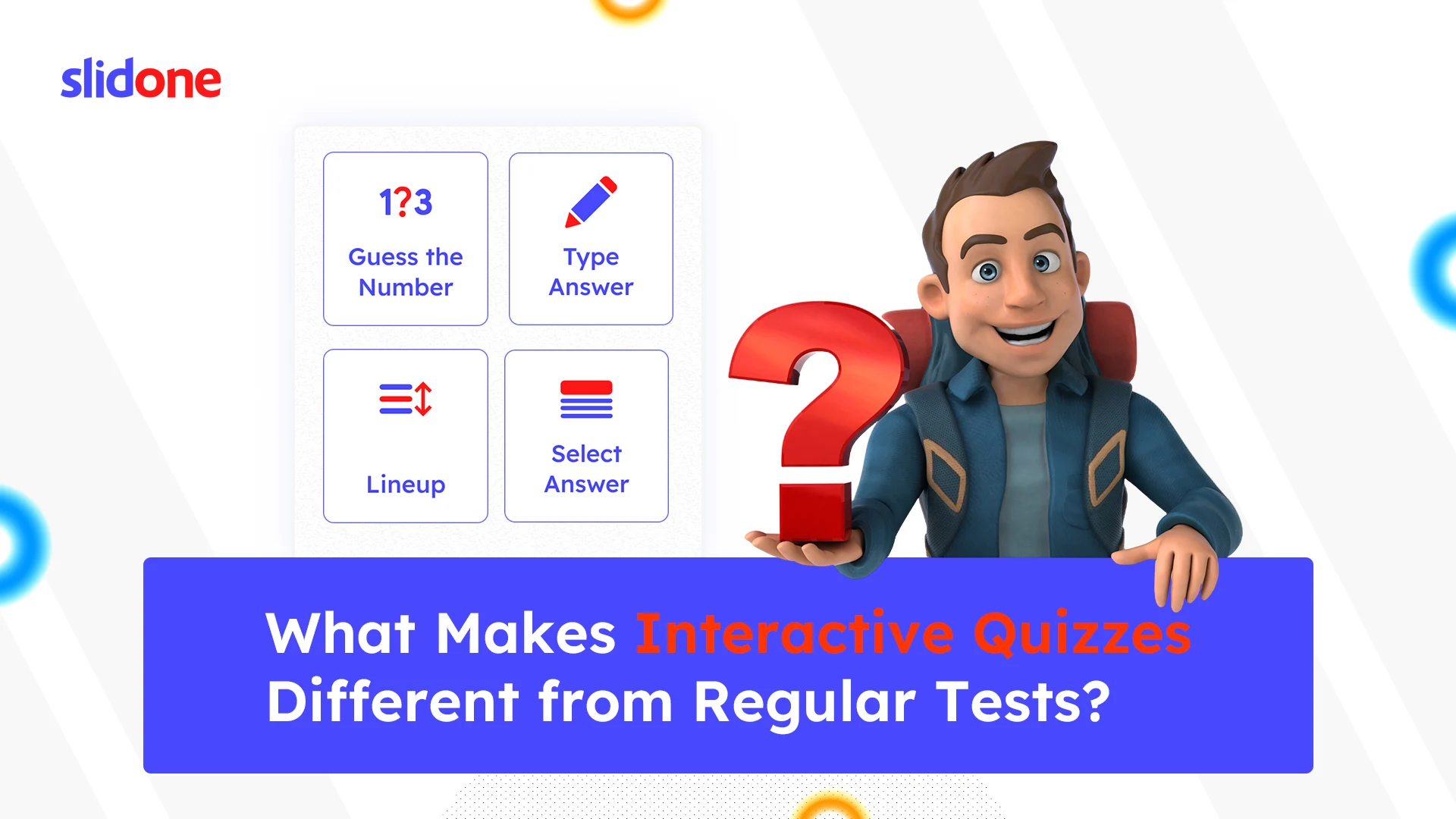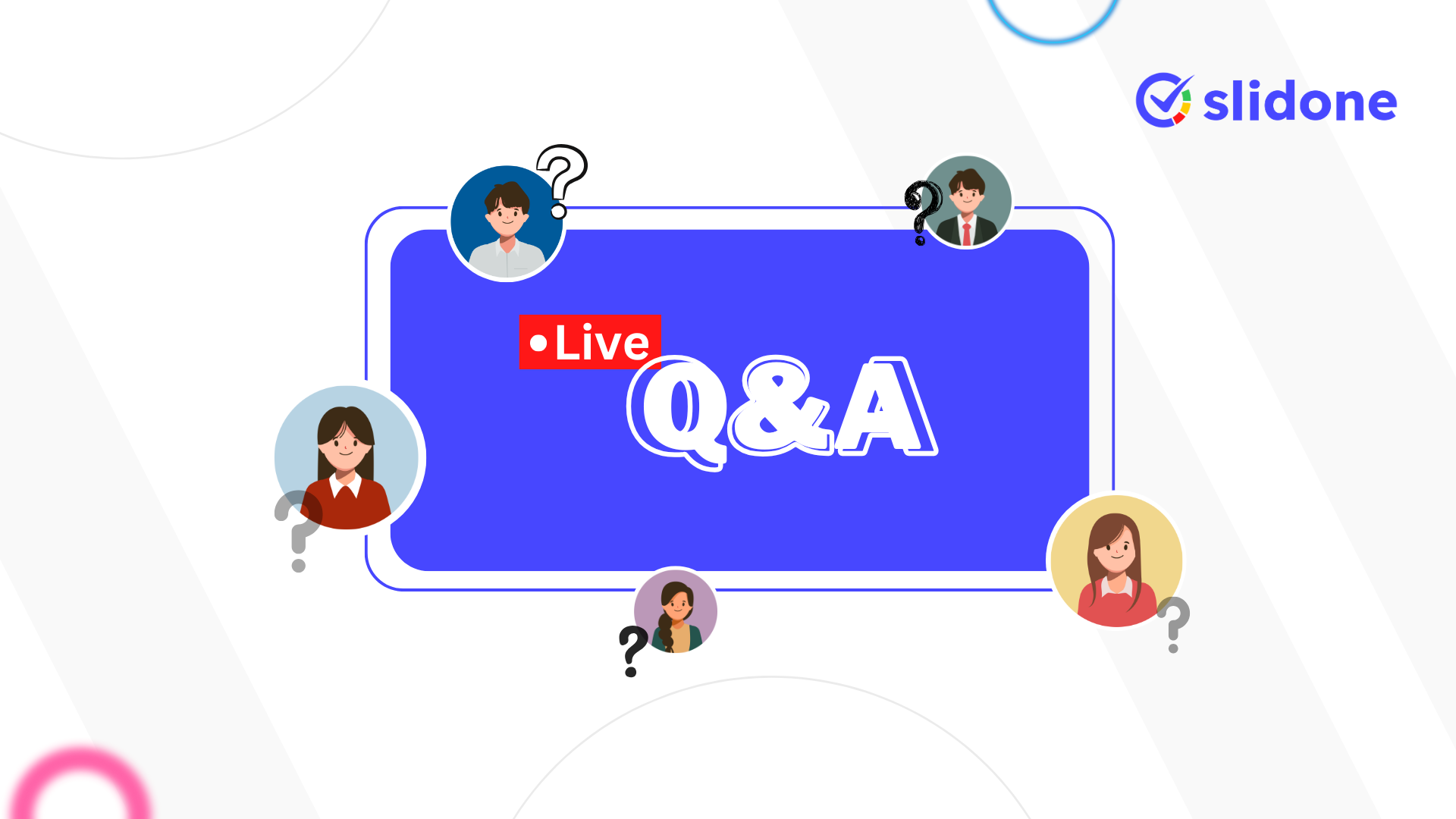In the world of education, quizzes and tests are important tools for assessing a student’s understanding of a subject. They also help teachers measure progress, identify areas for improvement, and ensure that students are understanding the material being taught. However, not all questions and tests are created equal. With the rise of digital learning tools, a new form of research has gained popularity: interactive quizzes. But what makes interactive quizzes different from regular tests? And why do they do what teachers and students want? This blog explores the unique aspects of interactive quizzes, their benefits, and how they can transform the learning experience.
Understanding Regular Tests
Before diving into interactive questions, it’s important to understand what standardized testing is and its role in traditional education. Standardized testing, often referred to as written or paper tests, has been a common way to assess students for decades. They typically consist of multiple choice questions, true/false questions, short answer questions, and essay questions. Here’s a closer look at some of the characteristics of regular tests:
1. Organized and standardized:
Regular tests generally follow a structured format with a fixed number of questions, a time limit, and a scoring system. The goal is to remain consistent, allowing teachers to compare student performance based on the same criteria.
2. Focus on remembering and memorizing:
Regular tests generally emphasize memory, asking students to recall facts, dates, and definitions. The focus is on testing how well the student has memorized the material rather than testing their understanding, or critical thinking.
3. Paper based:
Many routine tests are conducted on paper, although digital versions are common. However, digital tests also mimic the design and format of paper-based tests.
4. One-way communication:
Regular testing is often one way to communicate. Teachers create the test, students do it, and then teachers give grades. There is little or no interaction in the exam itself, making the experience monotonous and sometimes stressful for students.
While standardized tests have advantages, such as a standardized way of measuring knowledge, they also come with limitations. These include exam stress, lack of immediate feedback, and an emphasis on memorization rather than deep understanding. This is where interactive questions come in handy.
What Are Interactive Quizzes?
Interactive quizzes are a modern approach to assessment that uses technology to create a more engaging and dynamic testing experience. Unlike regular testing, interactive questions are designed to engage students, be interesting, and be highly engaging. They incorporate multimedia elements such as images, video, and audio, and respond almost immediately, personalizing the experience.
Here’s what sets interactive quizzes apart:
1. Interesting and dynamic:
Interactive questions are designed to engage students’ attention. Vibrant graphics, sounds and animations are often included to make the experience more enjoyable. This keeps students engaged and makes learning less of a chore.
2. Immediate Response:
One of the most important benefits of interactive Q&A is the immediate empowerment. Unlike regular tests, where students wait for results, interactive questions immediately show the correct answer. This helps students understand their mistakes and learn from them right away.
3. Includes multimedia features:
Interactive Q&As can include a variety of multimedia content, such as videos, images, and even audio clips. For example, a history quiz might include a video about a historical event or a picture of a famous place. This makes the question interesting and allows students to interact with the content in a meaningful way.
4. Promotes active learning:
Interactive inquiry requires students to actively participate in the learning process. Usually involves problem solving, decision making, and critical thinking. For example, a question might ask students to draw and label a picture or match word definitions. This active participation makes the learning process more engaging and helps students retain information better.
How Do Interactive Quizzes Differ from Regular Tests?
Now that we have a basic understanding of interactive quizzes and regular exams, let’s explore the key differences between the two and how these differences can affect the learning experience:
1. Engagement Level:
Regular tests: Routine testing often feels monotonous and uninspiring. Students may struggle to stay focused, especially if the test includes long reading passages or complex questions.
Interactive quizzes: The fun nature of interactive quizzes makes them more appealing to students. By incorporating visuals, audio and interactive elements, these quizzes engage students and keep them motivated throughout the exam.
2. Learn by responding:
Regular tests: Traditional tests give answers only after grades are given. By the time students receive their results, they may have forgotten the context of the erroneous questions, making it difficult to learn from their mistakes
Interactive quizzes: Interactive questions provide immediate feedback, helping students understand where they went wrong and how they can improve. This real-time learning improves retention of content and helps students feel more confident in their understanding.
3. Stress levels:
Regular tests: The pressure to perform well on regular tests can be stressful for many students. Format, time constraints and high stakes can cause anxiety, and can negatively impact performance.
Interactive quizzes: Because interactive questions tend to be game-like and informal, they often provide a comfortable environment for students. This low-pressure environment allows students to focus on learning rather than just getting good grades, making the experience less stressful.
4. Flexibility:
Regular tests: Standardized testing is often standardized, which means it doesn’t always cover learning styles. One testing method may not work for every student.
Interactive quizzes: Interactive quizzes are highly customizable. Teachers can tailor questions to suit student interests, learning levels, and needs. For example, an instructor can design quizzes with a mixture of different types of questions, such as multiple-choice, matching, and short-answer questions, to create a personalized learning experience
5. Flexibility in Timing
Regular testing: Traditional tests are usually administered at a specific time, such as during a class period or on a set day. This limits flexibility, especially if students need more time to complete the test.
Interactive quizzes: Interactive questions are available online, allowing students to move at their own pace. This flexibility makes it easier for students to incorporate learning into their schedules, whether they study in school or at home.
Why Interactive Quizzes Are the Future of Learning?
The shift to interactive questions is not automatic; it is a way of portraying the changing nature of education. As more educators and educational institutions recognize the need to engage students in new and creative ways, interactive inquiry has proven to be a powerful tool to achieve this goal and why it stands for the future of learning here.
1. Adapting Distance and Hybrid Learning:
The COVID-19 pandemic has accelerated the adoption of distance and blended learning. Interactive quizzes fit perfectly into this new paradigm, enabling teachers to create assessments that students can take anywhere, anytime. These changes ensure that learning can take place seamlessly whether students are in class or studying at home.
2. Playful education:
Games, or game-like materials used in non-game contexts, have become increasingly popular in education. Interactive quizzes align with this concept by turning exploration into a game-like experience, complete with prizes, rankings and immediate rewards. This approach makes learning feel like a game, which can greatly increase student engagement and interest.
3. Promoting Lifelong Learning:
Interactive inquiry encourages students to take control of their learning and explore knowledge beyond the classroom. With the ability to access questions outside of school hours and return to them as needed, students are likely to develop the habit of continuing to learn. This self-paced approach to learning is a valuable skill that students can take with them throughout their lives.
4. Supporting individual learning:
Personalized learning is all about personalizing education to meet the unique needs of each student. Interactive questions allow teachers to create customized questions that address the unique strengths and weaknesses of individual students. This personalized approach ensures that each student receives the support they need to succeed.
The Benefits of Interactive Quizzes
Interactive quizzes offer several benefits that make them a valuable addition to modern education. Here are some of the key advantages:
1. Increases motivation:
Because interactive quizzes feel more like a game, they naturally increase student motivation. Students often engage in interesting and engaging questions. This increased motivation can lead to better engagement and higher overall achievement.
2. Promotes self-directed learning:
Interactive quizzes can encourage students to manage their own learning. The ability for students to receive quizzes after class and review results allows them to identify areas for improvement and work on that knowledge at their own pace.
3. Supports different learning styles:
Every student learns differently. Some students are visual learners, while others can learn better with audio or hands-on activities. Interactive quizzes can incorporate all of these elements, making it easier to reach a diverse group of students.
4. Increases memory storage:
The combination of visual, audio and communication features helps enhance memory retention. When students engage with the story in different ways, they are more likely to remember it. This makes interactive quizzes especially effective for topics such as vocabulary or historical facts that require rote memorization.
5. Provides real-time feedback to teachers:
Interactive quizzes can generate data in real time, providing teachers with valuable insights into students’ understanding of the topic. This allows teachers to identify common mistakes, adjust their teaching strategies, and provide targeted support to students in need.
Examples of Interactive Quiz Activities
To help illustrate the value of interactive quizzes, here are some practical examples of how they can be used in the classroom:
1. Key Concepts Reviewed:
At the end of the lesson, teachers can use interactive questions and answers to review key concepts with the class. For example, after studying biology, students could create a quiz with pictures of cells and ask them to label the sections. This reinforces their understanding in an interesting way.
2. Daily warm-up activities:
Interaction quizzes can be used as a daily learning activity to engage students at the beginning of the lesson. A quick quiz with a few questions about the first day’s lesson can help students refresh their memory and prepare them for new material.
3. Formative Assessment:
Teachers can use interaction quizzes as a formative probe to gauge student understanding before moving on to new topics. This helps teachers to adjust their lesson plans where students may need more support.
4. Homework Guidelines:
Interactive quizzes can also be given as homework, allowing students to study and revise at their own pace. Immediate feedback helps students correct mistakes and better understand concepts.
Conclusion: Embracing the Power of Interactive Quizzes
The difference between interactive quizzes and regular testing comes down to participation, flexibility, and the ability to make learning an enjoyable experience. While standardized tests have their place in the education system, interactive quizzes offer a new and modern approach that resonates with today’s students. Using interactive quizzes and answers, teachers can create an environment where students are eager to participate, learn from their mistakes, and develop a genuine love for learning.
Whether you’re a teacher looking to add a new tool to your learning toolkit, a parent looking for an engaging learning activity for your child, or a student looking to make learning more fun, interactive questions offer a world of possibilities to transform their learning experience. It has the power to transform.
So, why stick to the old ways when you can make learning more interactive and fun? It’s easier than ever to create quizzes using platforms like Slidone that not only test knowledge but spark interest and spark a deeper connection to the topic Give interactive quizzes a try, and you just might find it’s the key to giving you have unlocked a more vibrant and effective learning experience for your students.
Happy quizzing!





Leave a Comment
Your email address will not be published. Required fields are marked *